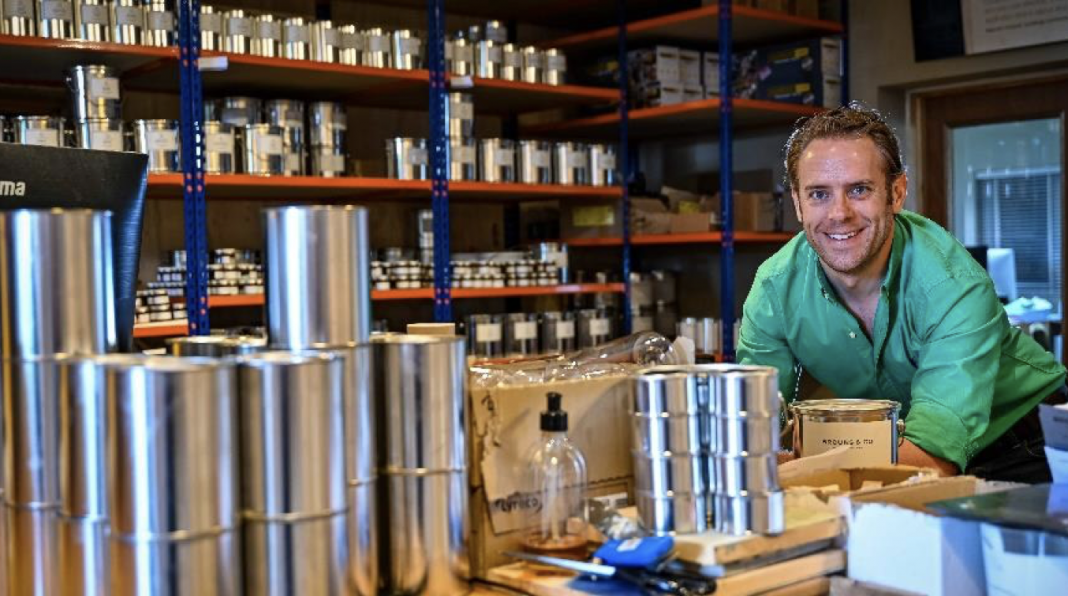Brouns & Co is bringing linseed oil paint-making back to Yorkshire for the first time in more than 100 years.
The company, headed by building conservation expert Michiel Brouns, has shifted its entire linseed paint production process from Denmark to Sherburn in Elmet near Leeds. Now the paint’s main ingredient, oil from flaxseed grown and pressed in nearby Collingham, is being triple-milled, with ground natural pigments, at the Sherburn plant using a higher-tech version of centuries-old methods of manufacturing linseed paint.
Brouns relocated from his native Netherlands to Yorkshire in 2006, using his expertise in the preservation of historic buildings to establish the Brouns & Co brand. “I knew about linseed paint and its incredible properties which can protect timber-built properties for hundreds of years and seen how it had been usurped by modern plastic paint which is not only not as effective as linseed paint but has now also been identified as the largest source of microplastics in the seas,” he said.
“Linseed is the ideal coating for timber because it doesn’t form a film on top of the timber, allows water to escape again and helps to preserve the wood. And now that we have brought the entire process to Yorkshire, from growing the flax to producing and packaging the paint, the sustainability of the product is even better.”
The linseed paint manufacturing process involves mixing the paint in barrels before transferring it to a triple roller mill, where it is passed through rollers up to five times, depending on the grain size of the pigments used.
“Although demand for our products in the US is now escalating, and we are becoming the paint of choice for maintaining growing numbers of the timber new-build and historic properties over there, many of our customers are based in the north of England and we are always conscious of the carbon footprint of our products,” added Mr Brouns.
Linseed paint was last produced in Yorkshire at the end of the 19th century when large crops of flax were grown for their stems, the main component of linen and canvas production. Flax mills would also use the flax seeds to produce linseed oil and paint.
Brouns & Co’s linseed paint is used in the UK by a raft of historic properties including Chatsworth House in Derbyshire and English Heritage-owned Brodsworth Hall near Doncaster, as well as by architects and developers. The business currently employs seven people at its Leeds headquarters and manufactures its exterior and interior linseed paint in a range of 40 historically accurate colours.
On this month’s US trip Brouns will visit restoration projects recently completed using Brouns & Co linseed paint including a landmark Maine bakery, and the Printmaker’s Inn, a luxury hotel in Savannah, Georgia. He will also provide lunch-and-learn sessions as well as RIBA approved CPD presentations.
The Yorkshire firm’s linseed oil paint will also be used on the Wilton House Museum, a 1750s building converted to a museum in Richmond, Virginia. Brouns has also recently advised on the restoration of the Ailey Young House, a historically important African American building in North Carolina.
Mr Brouns added: “I very much see our product as preserving the past as well as future-proofing buildings, given that our paint is natural, sustainable and environmentally-friendly. Not only does it contain only natural ingredients, across Europe, original coats of linseed paint have survived perfectly well on houses that are well over 500 years old.”



